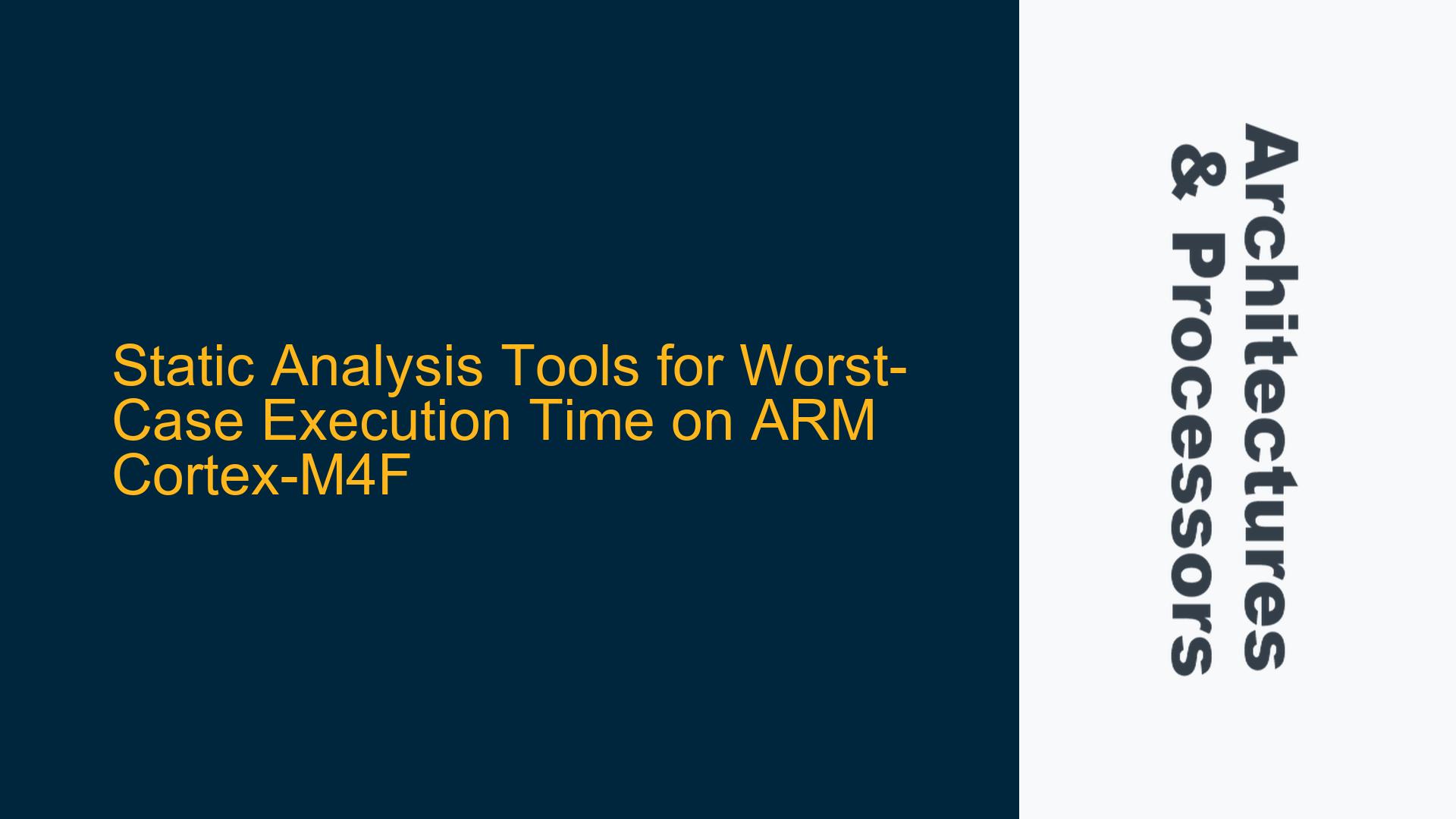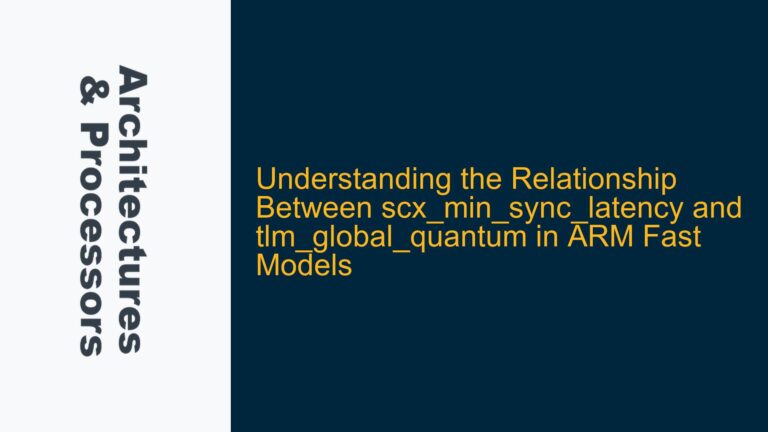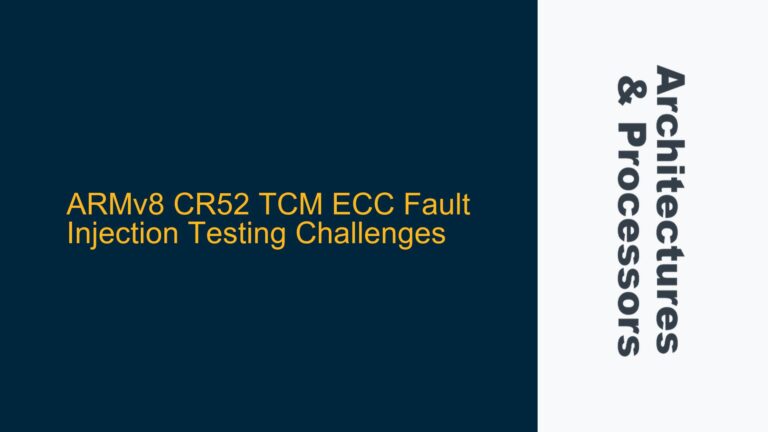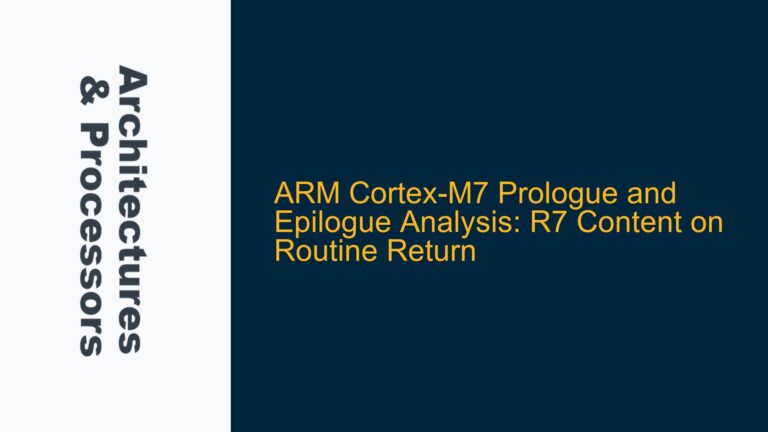Understanding Worst-Case Execution Time (WCET) Analysis on ARM Cortex-M4F
Worst-case execution time (WCET) analysis is a critical aspect of real-time embedded systems design, particularly for safety-critical applications where timing guarantees are paramount. The ARM Cortex-M4F, with its floating-point unit and efficient Thumb-2 instruction set, is widely used in such systems. However, determining the WCET of a binary running on this architecture involves addressing several challenges, including pipeline effects, branch prediction, memory hierarchy interactions, and the impact of the floating-point unit.
The Cortex-M4F’s 3-stage pipeline (fetch, decode, execute) introduces complexities in timing analysis due to potential stalls and speculative execution. The processor’s Harvard architecture, with separate instruction and data buses, further complicates the analysis as memory access patterns can significantly influence execution time. Additionally, the presence of a Floating-Point Unit (FPU) adds another layer of complexity, as floating-point operations have variable execution times depending on the operation type and operand values.
Static WCET analysis tools aim to compute a safe upper bound on the execution time of a program without requiring actual execution. These tools must model the processor’s microarchitectural features accurately, including pipeline behavior, memory access timing, and branch prediction. The challenge lies in balancing precision and computational tractability: overly conservative models may yield uselessly large bounds, while overly optimistic models may violate safety guarantees.
Challenges in Static WCET Analysis for ARM Cortex-M4F Binaries
The primary challenge in static WCET analysis for ARM Cortex-M4F binaries stems from the need to accurately model the processor’s microarchitectural behavior while analyzing the control flow of the binary. The Cortex-M4F’s pipeline can introduce timing anomalies, where local timing variations in one part of the program can have non-linear effects on the overall execution time. For instance, a cache miss in one basic block might delay the fetch of a subsequent branch instruction, potentially altering the program’s control flow and thus its worst-case timing.
Memory hierarchy effects pose another significant challenge. The Cortex-M4F typically employs a combination of flash memory for instruction storage and SRAM for data. Access times for these memories can vary significantly, and the analysis must account for potential contention on the bus interface. Furthermore, the processor’s optional Memory Protection Unit (MPU) can introduce additional latency when access checks are performed.
The presence of the FPU adds another dimension to the analysis. Floating-point operations on the Cortex-M4F have variable latencies depending on the specific operation and the values of the operands. For example, a floating-point multiply operation might take between 1 and 32 cycles, depending on whether the operands are normalized, denormalized, or special values like NaN or infinity. Static analysis tools must conservatively estimate these latencies to ensure the computed WCET bound remains safe.
Control flow reconstruction from binary code is another critical aspect. The Thumb-2 instruction set’s mixed 16-bit and 32-bit instructions complicate the disassembly process, as instruction boundaries cannot be determined without parsing the entire instruction stream. Indirect branches and function pointers further complicate control flow analysis, as the target addresses may not be statically determinable.
Implementing Static WCET Analysis with Open-Source Tools
While commercial tools like aiT provide comprehensive WCET analysis capabilities, several open-source alternatives can be adapted for use with ARM Cortex-M4F binaries. The OTAWA (Open Tool for Adaptive WCET Analysis) framework is one such option. OTAWA provides a modular architecture for implementing WCET analysis tools, with support for various processor models and analysis techniques.
To use OTAWA for Cortex-M4F WCET analysis, the first step is to import the binary and reconstruct its control flow graph (CFG). This involves disassembling the Thumb-2 instructions and identifying basic blocks and their connections. OTAWA’s built-in disassembler can handle Thumb-2 code, but may require configuration to accurately model the Cortex-M4F’s specific instruction timings.
Once the CFG is constructed, the next step is to annotate it with timing information. OTAWA uses a combination of abstract interpretation and integer linear programming (ILP) to compute WCET bounds. The abstract interpretation phase models the processor’s pipeline behavior, accounting for potential stalls and hazards. The ILP phase then formulates the WCET computation as an optimization problem, where the objective is to maximize the execution time while respecting the constraints imposed by the CFG and pipeline model.
For accurate analysis, a detailed processor model of the Cortex-M4F must be provided. This model should include pipeline stage latencies, memory access timings, and FPU operation latencies. While OTAWA includes generic ARM models, these may need to be customized for the specific Cortex-M4F implementation being targeted. The model should also account for any system-specific features, such as the MPU or custom memory configurations.
To handle floating-point operations, the analysis must conservatively estimate their latencies. This can be done by assuming worst-case operand values for each operation. For example, a floating-point multiply should be assumed to take the maximum 32 cycles, regardless of the actual operands. While this approach may lead to overly conservative bounds, it ensures the safety of the computed WCET.
Memory hierarchy effects can be modeled using OTAWA’s cache analysis capabilities. For the Cortex-M4F’s flash memory, the analysis should account for potential wait states and prefetch buffer behavior. SRAM accesses can typically be modeled with a fixed latency, unless the system employs more complex memory arbitration schemes.
Finally, the analysis results should be validated against actual measurements from the target hardware. While static analysis provides safe upper bounds, empirical validation can help identify cases where the analysis is overly conservative and guide refinements to the processor model or analysis parameters.
| Analysis Step | Description | Challenges | Solutions |
|---|---|---|---|
| Control Flow Reconstruction | Disassemble Thumb-2 code and construct CFG | Mixed 16/32-bit instructions, indirect branches | Use OTAWA’s disassembler, implement heuristics for indirect branch targets |
| Pipeline Modeling | Model Cortex-M4F 3-stage pipeline | Timing anomalies, variable instruction latencies | Use abstract interpretation, customize OTAWA’s ARM pipeline model |
| Memory Hierarchy Analysis | Model flash and SRAM access times | Wait states, prefetch buffer behavior | Configure OTAWA’s memory models, account for system-specific configurations |
| FPU Operation Analysis | Estimate floating-point operation latencies | Variable latencies based on operand values | Assume worst-case latencies for each operation type |
| WCET Computation | Formulate and solve ILP problem | Scalability for large programs | Use OTAWA’s ILP solver, apply program slicing to reduce problem size |
| Validation | Compare analysis results with hardware measurements | Overly conservative bounds | Refine processor model, adjust analysis parameters based on empirical data |
In conclusion, while static WCET analysis for ARM Cortex-M4F binaries presents significant challenges, open-source tools like OTAWA provide a viable starting point. By carefully modeling the processor’s microarchitectural features and validating the analysis against actual hardware measurements, it is possible to compute safe and useful WCET bounds for real-time systems. However, the complexity of the analysis underscores the value of commercial tools like aiT, which provide more comprehensive support and refined analysis techniques out of the box.






